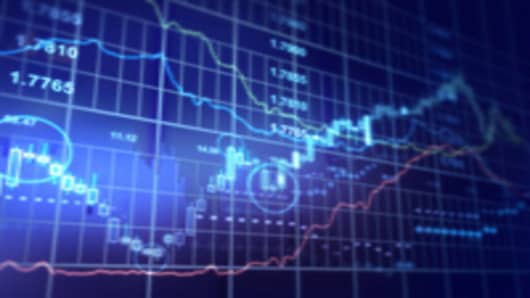Markets drifted over the last week as investors shrugged at more signs the economy was slowly turning around. Stock prices are not such bargains anymore. And corporate insiders, including executives and board members, are starting to sell, suggesting that some of the smarter money is heading for the door.
“The people who know are getting out early,” said Art Cashin, the director of floor operations at UBS, who said his “gut feeling” about the markets prompted him to sell some stocks last week. “This rally’s a little long in the tooth.”
On Friday, the research firm TrimTabs reported that insider selling had grown to $6.1 billion in the month of August through last Thursday, its highest levels since May 2008 — when the Dow Jones industrial average was floating above 12,000, compared with just over 9,500 at Friday’s close.
The ratio of insider selling to insider buying also soared in August, to about 30 to one, its highest levels since the firm started keeping numbers in 2004.
“You have a classic case of greed stampeding investors into believing that nirvana is at hand,” said Charles Biderman, chief executive of TrimTabs. “We just don’t see how the market’s going to last.”
Of course, insiders are not always right. Many of the country’s smartest investors got clobbered during the downturn last year, and analysts say it is normal for investors to cash in some gains.
And betting against Wall Street’s momentum has not been a smart move lately. The Dow and the Standard & Poor’s 500-stock index closed on Friday near their highest levels of the year. The Dow is up 45 percent from its March lows, and the S.& P. 500 is more than 50 percent higher.
Analysts say that financial stocks are looking even frothier as trading in a handful of big banks has come to dominate the action on Wall Street. The KBW Bank Index, which tracks two dozen national and regional lenders, has surged more than 150 percent since early March.
Shares of the troubled insurance giant American International Group have quadrupled. And Citigroup , Bank of America and Wells Fargo , while still down sharply from their record highs, have been some of the rally’s biggest winners.
For months, the cautious and pessimistic voices on Wall Street kept saying the rally would end as investors realized the extent of problems facing the economy — that the financial system was still on life support, companies were struggling to generate new revenue, and nearly 15 million people in the United States were unemployed. But the markets defied their warnings and chugged higher.
The investors now waiting for Wall Street to lose its footing see a big “sell!” sign flashing in the confidence that has accompanied the gains.
Just before stocks turned around in early March, only 2 percent of investors were optimistic, according to the Daily Sentiment Index, which measures the mood of small traders and is run by Jake Bernstein, an independent market analyst. Now, the index shows that about 89 percent are feeling bullish. Investors were equally cheery when the Dow hit its record high in October 2007.
Robert Prechter, president of Elliott Wave International, a technical analysis firm in Gainesville, Ga., cut his negative outlook on stocks in late February. “Now,” he wrote in an e-mail message, “we are firmly back on the bear side.” Investors might be embracing greed once again, but Mr. Prechter said he doubted the stock indexes could replicate the remarkable gains of the past five months.
Others see signs of trouble in volatile market swings in China, in the American commercial real estate sector, or in just the sheer amount of time that has passed without a major drop in stocks.
“I think everyone’s pretty bearish,” said Thomas J. Lee, the chief United States equity strategist at JPMorgan Chase. “People I talk to think there’s a 10 percent correction coming.”
Jeremy Grantham, chairman of the investment firm GMO, was another investor who began encouraging others to buy during Wall Street’s darkest days. But when the S.& P. 500 rose above 1,000 this summer, his firm started taking money off the table.
“We said that’s enough above fair value that you want to do something,” said Ben Inker, GMO’s director of asset allocation. “And we made a move.”
So far, it is just a small one. The firm cut its equity holdings by about two percentage points, to 63 percent, which is still up substantially from last year, and it is focusing on “big stable blue chips.”
The hedge fund manager Doug Kass, who declared in March that stocks had skidded to a “generational bottom,” said last week the rally had run its course.
Like other investors who expect the markets to falter, Mr. Kass said he believed the economy was not heading toward a quick or easy recovery. Companies have made themselves look profitable by slashing costs, but he said they are not going to rake in more money in the months ahead as long as weakened consumers stay in hiding.
“I think we’ve seen the high for the year,” he said. “There’s a time to hold ’em and a time to fold ’em. And I think we’re at that point.”


